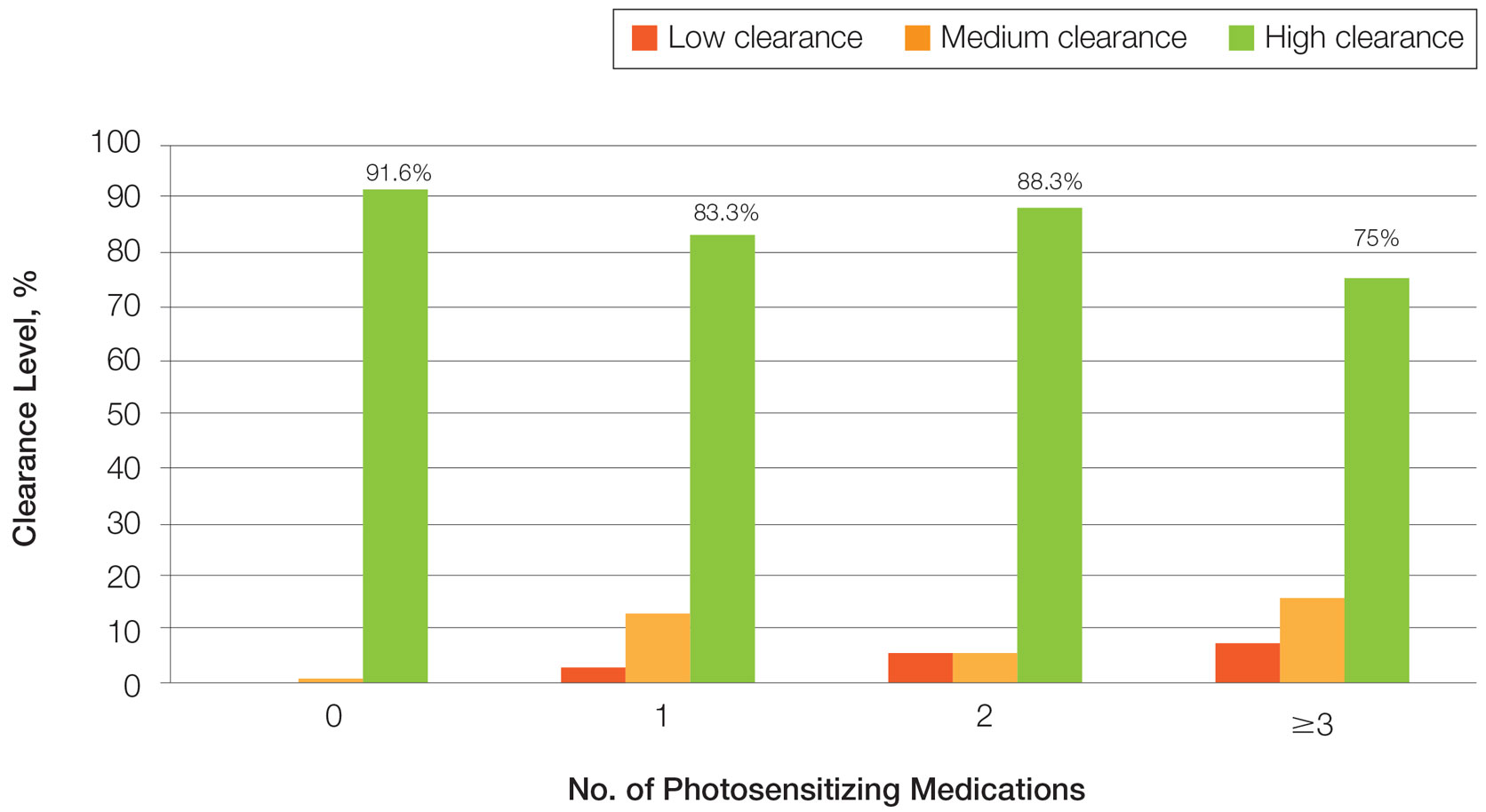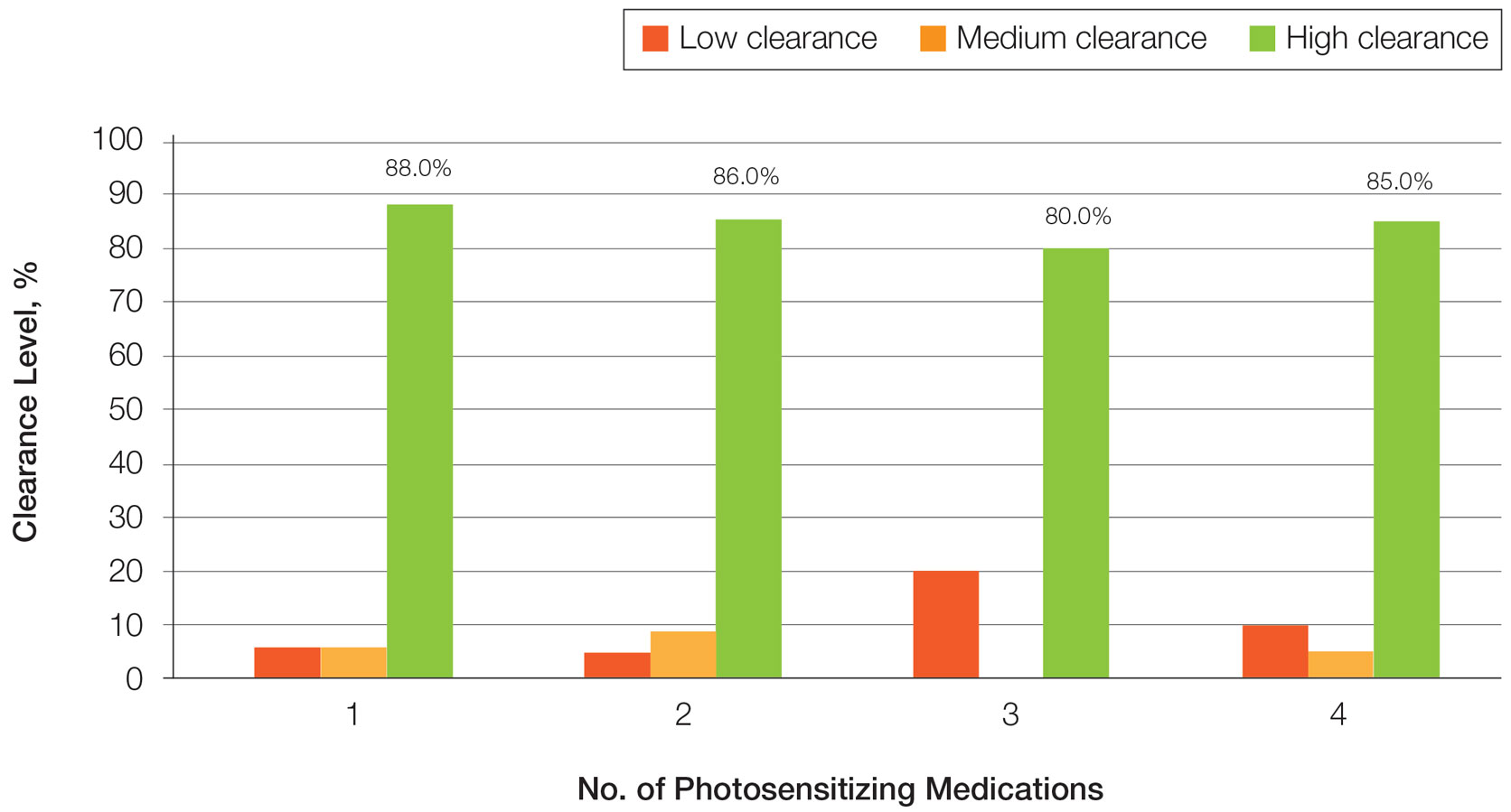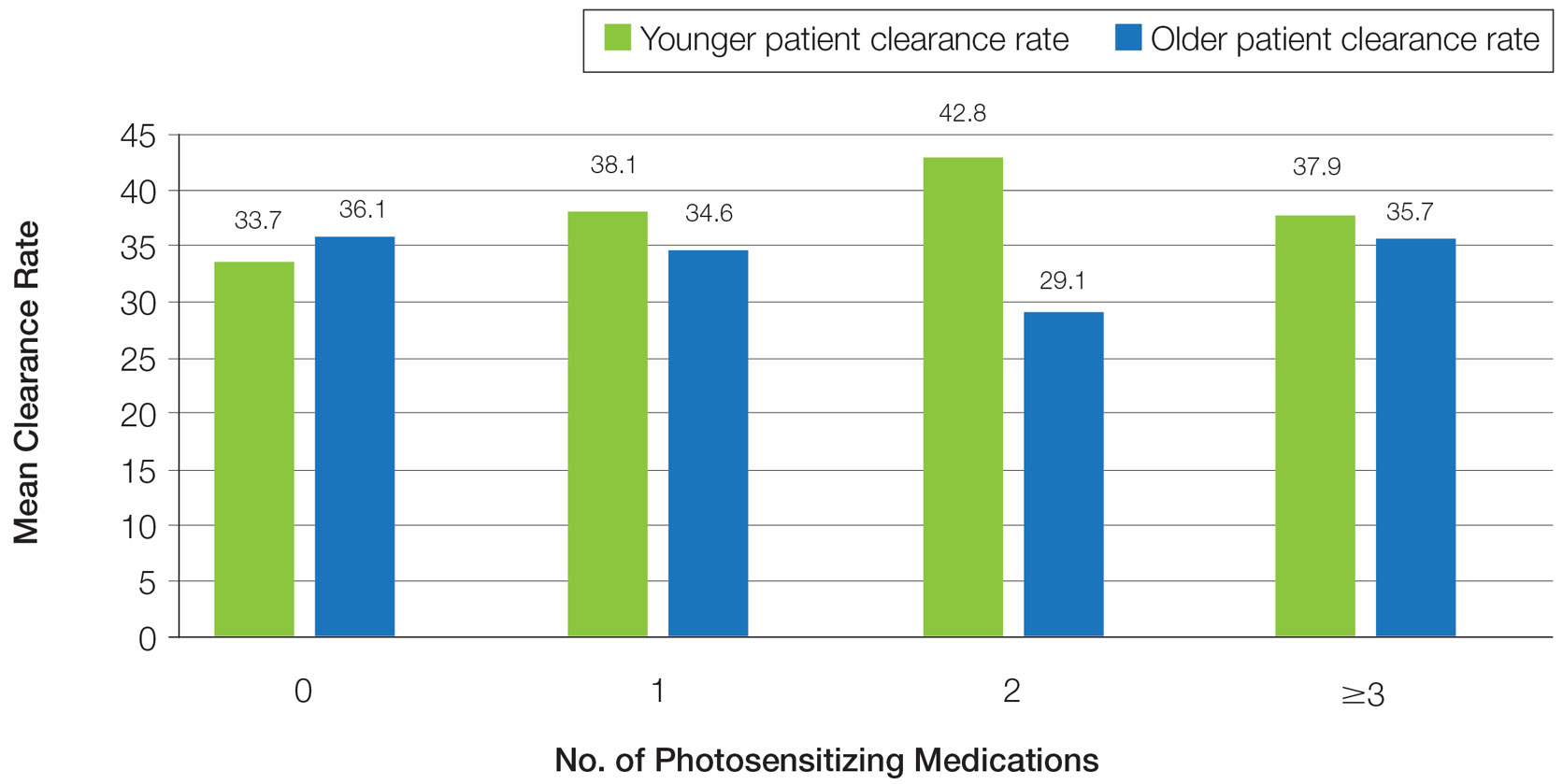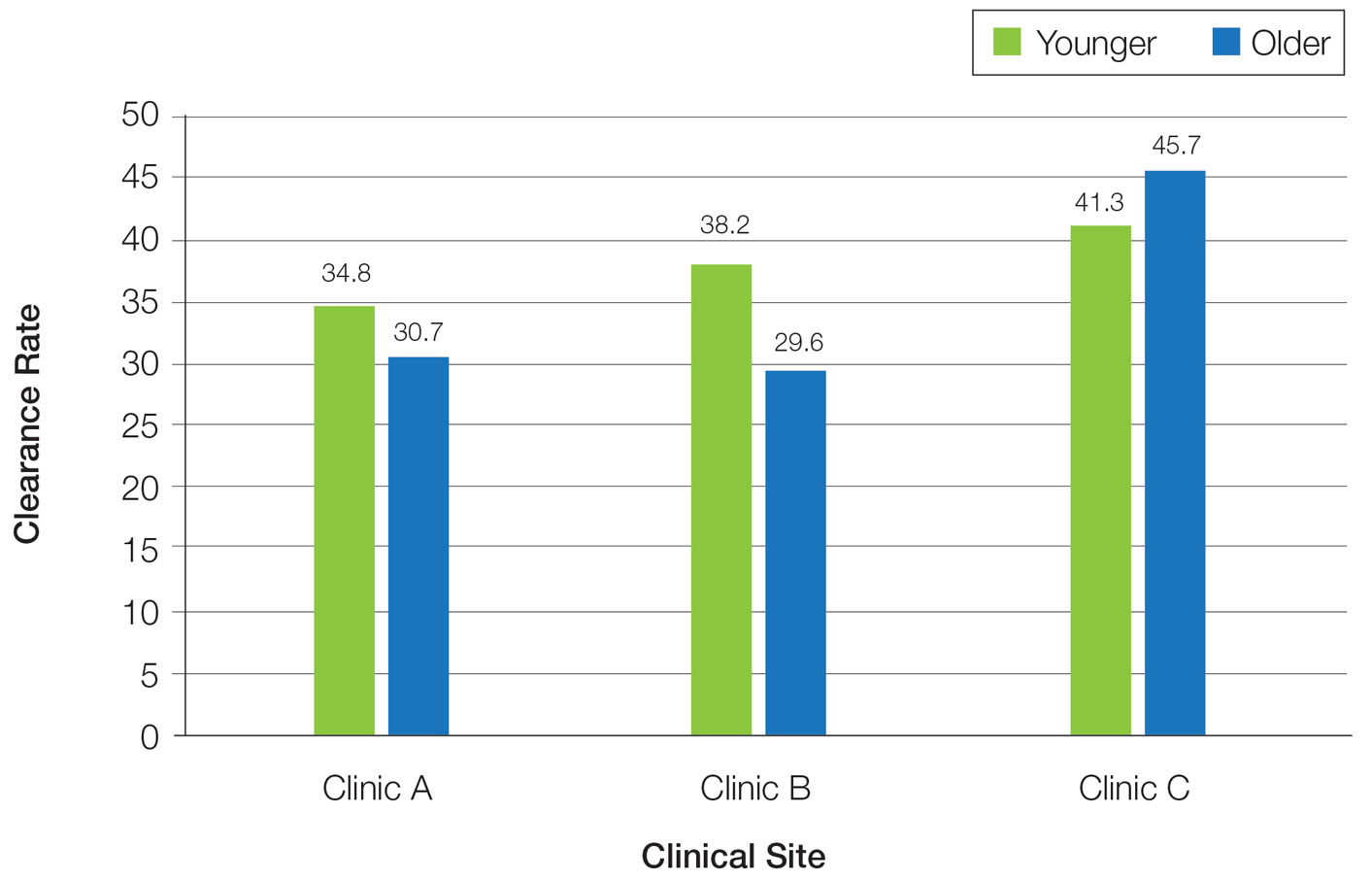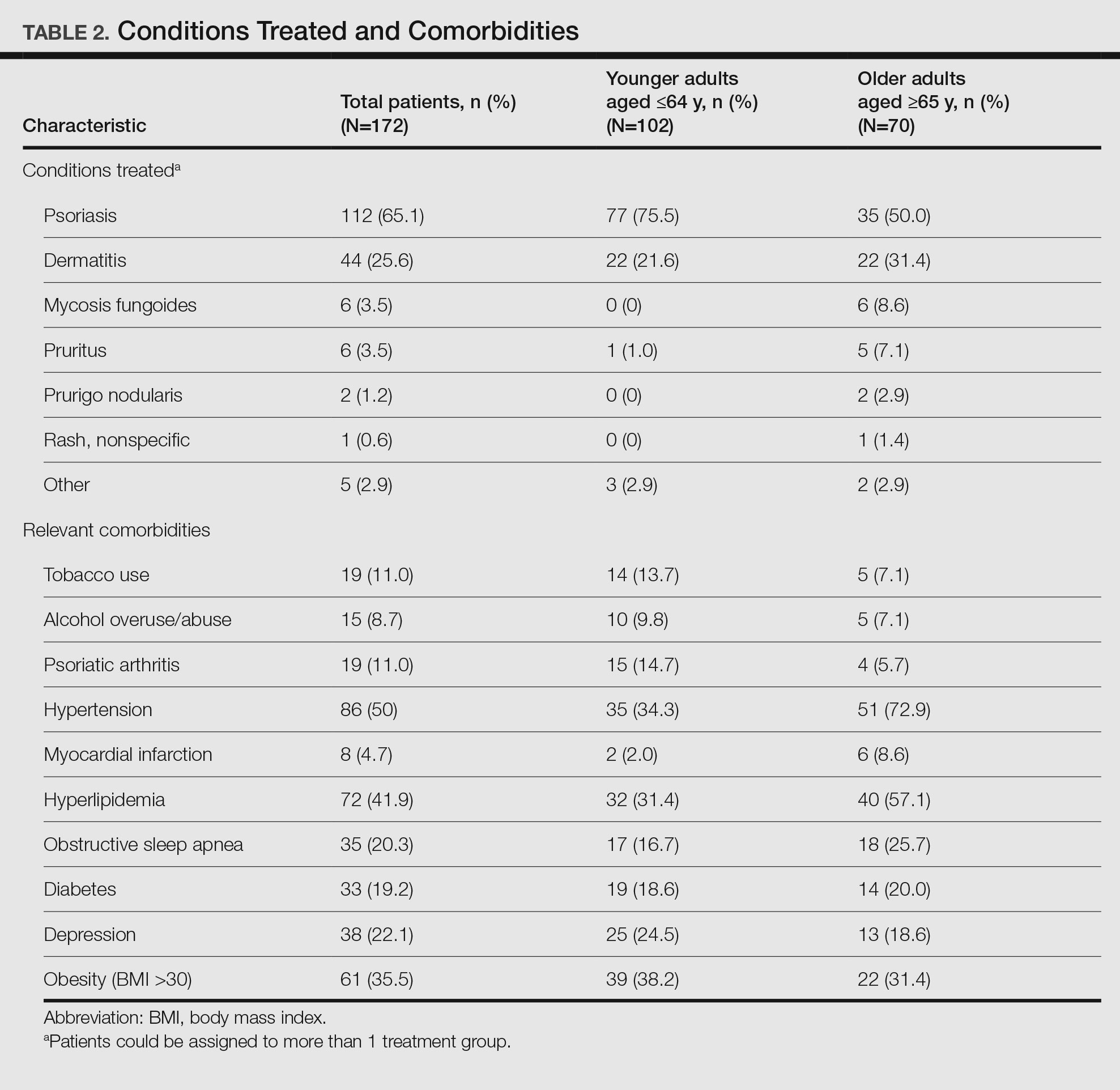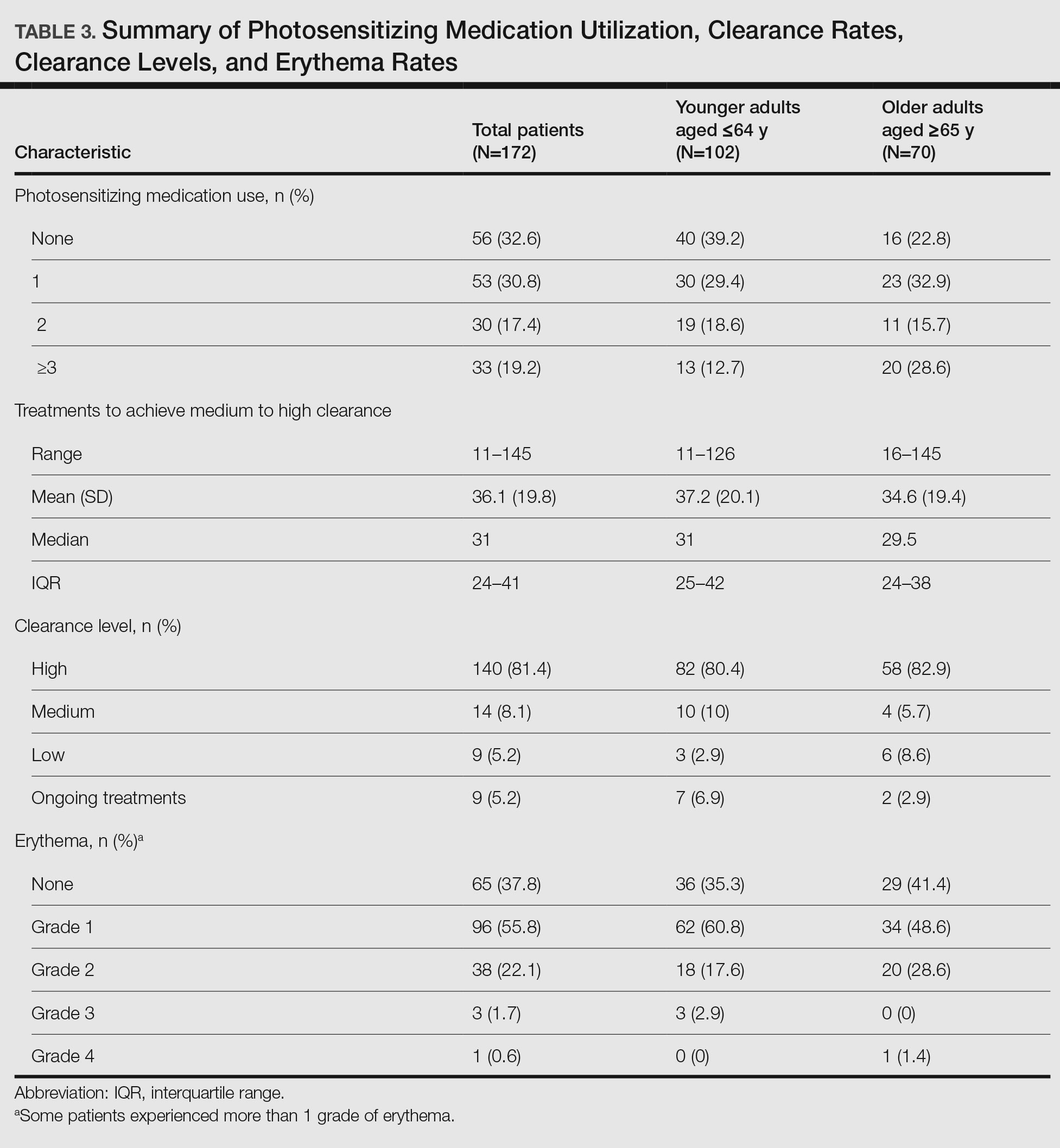Statistical Analysis—Data were analyzed using Stata statistical software (StataCorp LLC). Univariate analyses were used to examine the data and identify outliers, bad values, and missing data, as well as to calculate descriptive statistics. Pearson χ2 and Fisher exact statistics were used to calculate differences in categorical variables. Linear multivariate regression models and logistic multivariate models were used to examine statistical relationships between variables. Statistical significance was defined as P≤.05.
Results
Patient Characteristics—Medical records were reviewed for 172 patients who received phototherapy between 2012 and 2016. Patients ranged in age from 23 to 91 years, with 102 patients 64 years and younger and 70 patients 65 years and older. Tables 1 and 2 outline the patient characteristics and conditions treated.
Phototherapy Effectiveness—Narrowband UVB phototherapy was found to be equally effective in older vs younger adults, with 82.9% of older adults (n=58) achieving a high level of clearance vs 80.4% (n=82) of younger adults, and 5.7% (n=4) of older adults achieved a medium level of clearance vs 10% (n=10) of younger adults (Table 3). Although older adults had slightly faster clearance rates on average (34.6 vs 37.2 treatments), these differences were not significant.
Photosensitizing Medications, Clearance Levels, and Clearance Rates—There was no significant association between clearance levels and number of photosensitizing medications in either younger (Figure 1) or older (Figure 2) adults. There was a wide range of clearance rates in both groups (Table 3), but no relationship was identified between clearance rates and photosensitizing medications or age (Figure 3). Clinic C had higher overall clearance rates for both age groups compared to the other clinics (Figure 4), but the clearance levels were still equivalent. No consistent pattern emerged indicating that age was a factor for the slower clearance at this site, and no relationship was identified between taking photosensitizing medications and clearance levels (Fisher exact test, P=.467) or clearance rates (t[149]=0.75; P=.45).
Frequency of Treatments and Clearance Rates—Older adults more consistently completed the recommended frequency of treatments—3 times weekly—compared to younger adults (74.3% vs 58.5%). However, all patients who completed 3 treatments per week required a similar number of treatments to clear (older adults, mean [SD]: 35.7 [21.6]; younger adults, mean [SD]: 34.7 [19.0]; P=.85). Among patients completing 2 or fewer treatments per week, older adults required a mean (SD) of only 31 (9.0) treatments to clear vs 41.5 (21.3) treatments to clear for younger adults, but the difference was not statistically significant (P=.08). However, even those with suboptimal frequency ultimately achieved similar clearance levels.
Photosensitizing Medications and Erythema Rates—Many patients in both age groups took medications that listed photosensitivity as a potential side effect (77.1% of older adults and 60.8% of younger adults). Of them, most patients took only 1 or 2 photosensitizing medications. However, significantly more older patients took 3 or more photosensitizing medications (28.6% vs 12.7%; P=.01)(Table 3). Asymptomatic (grade 1) erythema was unrelated to medication use and quite common in all adults (48.6% of older adults and 60.8% of younger adults). Most patients had only a few episodes of grade 1 erythema (mean [SD], 1.2 [2.9] in older adults and 1.6 [2.2] in younger adults). More older adults had grade 2 erythema (28.6%) compared to younger adults (17.6%). Patients using 3 or more photosensitizing medications were twice as likely to experience grade 2 erythema. Grades 3 and 4 erythema were extremely rare; none of the patients stopped phototherapy because they experienced erythema.
Overall, phototherapy nurses adjusted the starting dose according to the phototype-based protocol an average of 69% of the time for patients on medications with photosensitivity listed as a potential side effect. However, the frequency depended significantly on the clinic (clinic A, 24%; clinic B, 92%; clinic C, 87%)(P≤.001). Nurses across all clinics consistently decreased the treatment dose when patients reported starting new photosensitizing medications. Patients with adjusted starting doses had slightly but not significantly higher clearance rates compared to those without (mean, 37.8 vs 35.5; t(104)=0.58; P=.56).



